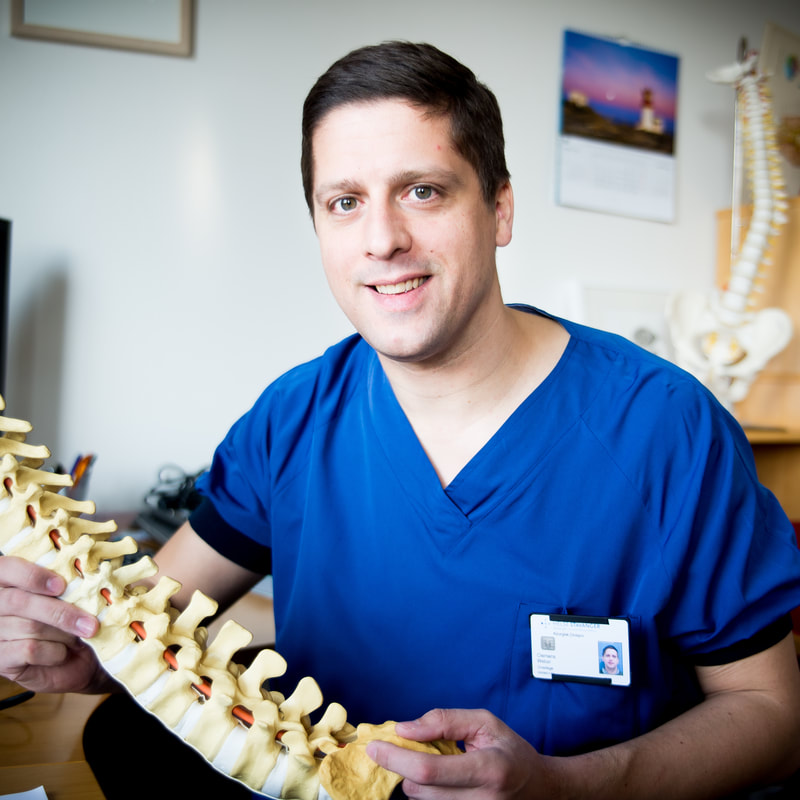Clemens Weber
MD, PhD
Consultant Neurosurgeon, University Hospital of Stavanger, Postdoctoral Research Fellow, University of Stavanger, Norway
Consultant Neurosurgeon, University Hospital of Stavanger, Postdoctoral Research Fellow, University of Stavanger, Norway
|
Clemens Weber is a neurosurgeon with main interest in neurotrauma and spinal disorders. He was trained at the Department of Neurosurgery, University Hospital of Rostock, Germany, and the Department of Neurosurgery at St. Olavs University Hospital in Trondheim, Norway. He is currently working as a consultant neurosurgeon at the Department of Neurosurgery at Stavanger University Hospital in Norway. He obtained a PhD from the National University of Science and Technology in Trondheim, Norway. His postdoctoral research project at the Department of Quality and Health Technology at the University of Stavanger focuses on traumatic injuries of the central nervous system.
Dr. Weber has published several research papers in leading journals such as British Medical Journal, New England Journal of Medicine, European Spine Journal, Global Spine Journal, Spine, European Journal of Trauma and Emergency Surgery, World Neurosurgery, and Acta Neurochirurgica. |
Clemens Weber is a member of several societies such as EuroSpine, AOSpine, EANS and the Norwegian Neurosurgical Society and the Norwegian Society of Spinal Surgeons. He serves as a board member of the EuroSpine Foundation.
Incidence, Mechanisms of Injury and Mortality of Severe Traumatic Brain Injury – An Observational Cohort Study based on Population-Based Data from New Zealand and Norway
|
Authors
Clemens Weber (1, 2) Joakim Stray Andreassen (3) Siobhan Isles (4) Kenneth Thorsen (5, 6, 7) Paul McBride (4) Kjetil Søreide (5, 7) Ian Civil (4, 8) |
(1) Department of Neurosurgery, Stavanger University Hospital, Stavanger, Norway
(2) Department of Quality and Health Technology, University of Stavanger, Stavanger, Norway (3) Department of Neurosurgery, St. Olavs Hospital, Trondheim, Norway (4) New Zealand Trauma Network, Auckland, New Zealand (5) Department of Surgery, Stavanger University Hospital Stavanger, Norway (6) Section of Traumatology, Stavanger University Hospital, Stavanger, Norway (7) Department of Clinical Medicine, University of Bergen, Bergen, Norway (8) Department of Surgery, Auckland City Hospital, Auckland, New Zealand |
Background: Comparing registry data from different countries with otherwise similar premises can help to identify possible differences in epidemiology, treatment and outcome which again may help to improve the care of trauma patients.
Methods: The incidence, mechanisms of injuries and mortality of severe TBI were compared based on population-based data from the two national trauma registries from New Zealand and Norway for a 4-years period from 01.01.2017 to 31.12.2020.
Results: A total of 1378 trauma patients with severe TBI were identified of which 751 (54,4%) from New Zealand and 627 (45,5%) from Norway. The age-adjusted incidence rate of severe TBI was 3,7/100.000 inhabitants in New Zealand and 2,9/100.000 in Norway. Road traffic crashes in younger patients and falls in elderly patients were the most common reasons for suffering severe TBI. The age-adjusted mortality rate due to severe TBI was 1,5/100.000 in New Zealand and 1,2/100.000 in Norway.
Conclusion: The incidence and mortality of severe TBI are similar in New Zealand and Norway. The fatality rates of severe TBI are still high. Road traffic crashes in younger patients and falls in elderly patients are the main causes for severe TBI in both countries.
Methods: The incidence, mechanisms of injuries and mortality of severe TBI were compared based on population-based data from the two national trauma registries from New Zealand and Norway for a 4-years period from 01.01.2017 to 31.12.2020.
Results: A total of 1378 trauma patients with severe TBI were identified of which 751 (54,4%) from New Zealand and 627 (45,5%) from Norway. The age-adjusted incidence rate of severe TBI was 3,7/100.000 inhabitants in New Zealand and 2,9/100.000 in Norway. Road traffic crashes in younger patients and falls in elderly patients were the most common reasons for suffering severe TBI. The age-adjusted mortality rate due to severe TBI was 1,5/100.000 in New Zealand and 1,2/100.000 in Norway.
Conclusion: The incidence and mortality of severe TBI are similar in New Zealand and Norway. The fatality rates of severe TBI are still high. Road traffic crashes in younger patients and falls in elderly patients are the main causes for severe TBI in both countries.



